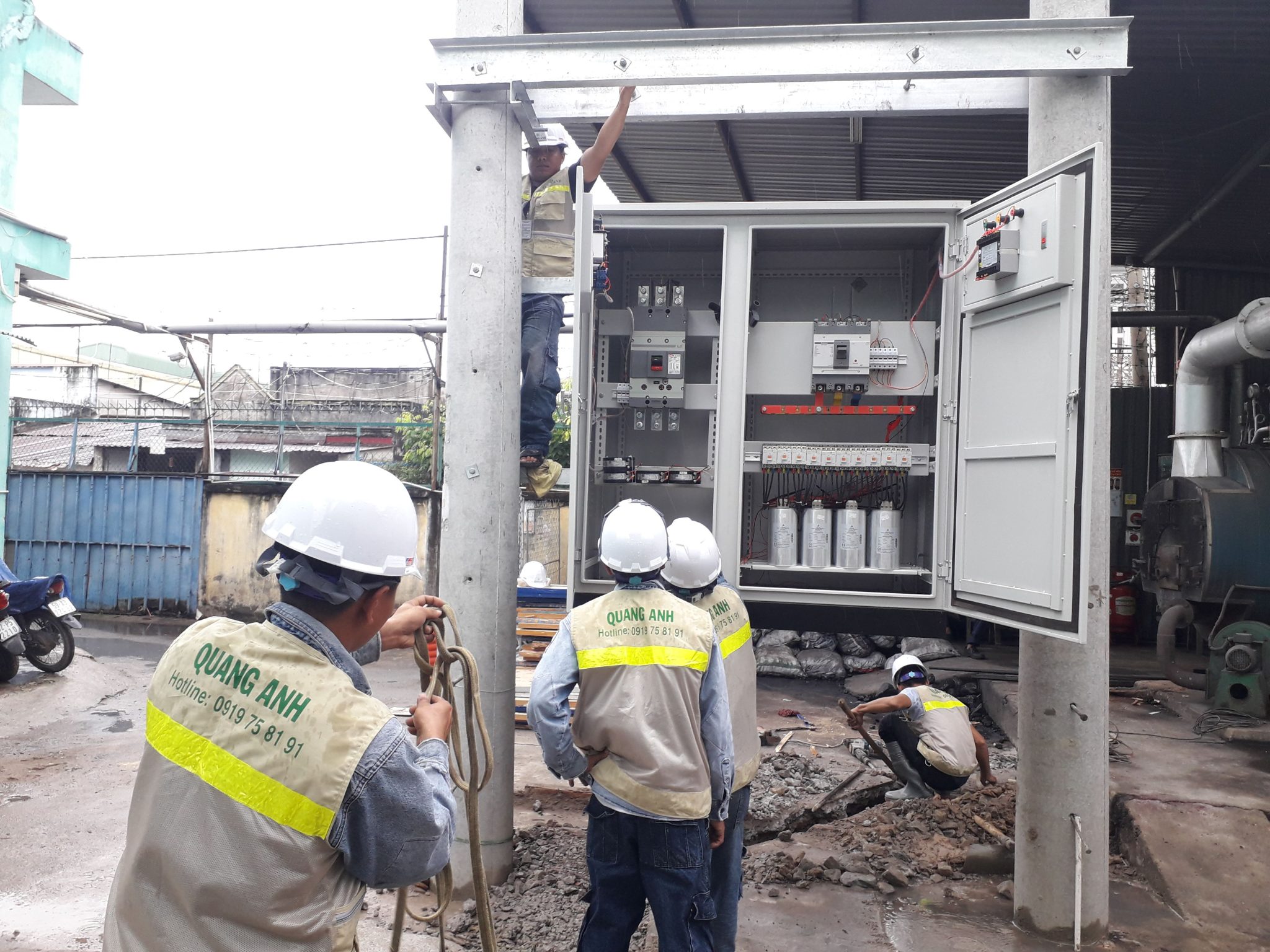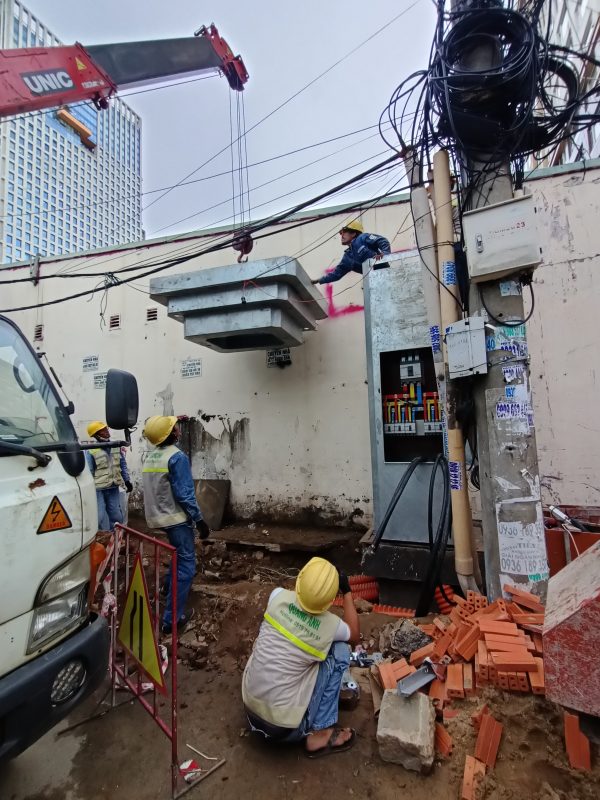Designing the electrical systems of a factory is a complex and crucial task to ensure smooth operation. Understanding each step is essential for successful execution.
Steps in Electrical Design
The process begins with analyzing load requirements and determining the necessary power based on the production equipment. The design of primary electrical systems involves selecting power stations, transformers, main panels, and cables. Precision in designing high-voltage networks tailored to needs is critical. Calculation and selection of power cables optimize performance, and the installation of cable trays must meet safety and aesthetic standards. Industrial lighting is vital for adequate illumination. Lightning protection and earthing systems are designed for maximum safety, and control and monitoring systems allow remote management.
This intricate task demands technical attention to detail and a methodical approach.
- Site Analysis and Positioning: Field studies evaluate the current electrical system, guiding sound design decisions. Assessing energy consumption requirements is vital to ensure systems effectively support operations. Positioning industrial electrical equipment like control panels requires careful planning during this phase.
- Technical Drawing Creation: Utilizing specialized software, detailed technical drawings specify crucial details such as energy, current, and voltage requirements in the lighting system.
- Electrical Equipment Selection: This involves selecting appropriate industrial electrical equipment, ensuring plant safety with protective devices like CB, RCCB, while reputable brands like ABB, Schneider, and Mitsubishi play significant roles.
- Energy Calculation: Calculating factory electric loads establishes precise power needs for an efficient distribution plan. This ensures powerful and efficient cable selection.
- Approval and Implementation: Technical drawings undergo approval to meet set standards, followed by practical implementation according to the established plan.
Safety Considerations
- Adhering to national and international electrical safety standards is mandatory, supported by regular monitoring systems.
- Operating and maintenance guides ensure effective function and staff safety.
By following these steps, the electrical design process achieves maximal efficiency, ensuring safety and resource optimization.

Factors Affecting Electrical Design
Safety is a top priority, protecting both people and equipment. System optimization is crucial to minimize energy loss, while aesthetic considerations ensure orderly system arrangement. Moreover, flexibility allows for easy system expansion or modification as needed.
Electrical design in construction and energy sectors requires meticulous consideration to ensure safety, efficiency, and eco-friendliness, influencing system quality and interaction.
An essential element is product aesthetics, conforming to ergonomic standards for user safety. Electrical Safety remains paramount, focusing on extending product life through recyclable and reusable designs. Energy-saving features enhance Energy Efficiency in response to Sustainable Development.
Beside products, human and financial resources are crucial. Ensuring sufficient financial backing for electrical design development and maintenance can optimize costs and significantly improve system efficiency. Expert involvement further guarantees project quality and success.
Technological advancements are key. Latest technologies enhance performance and cut costs, strengthening product competitiveness. Adopting advanced tech opens significant design improvement opportunities.
An indispensable factor is insulation material. Considering voltage, temperature, and frequency ensures high insulation capacity, determining safety and durability.
In the current development context, environmental care and sustainable growth are paramount. Designs should promote material recycling and reusability, reducing environmental impacts, aligning with sustainable thinking toward eco-friendly systems, facilitating Sustainable Development.
Through these factors, electrical design achieves a balance between efficiency, safety, and sustainability, offering economic benefits while protecting the environment, building trust in construction and energy sectors.

Tools and Technologies in Industrial Electrical Design
Using design software like AutoCAD, Revit, or ETAP is essential to create precise drawings and model electrical systems. Automation equipment is also widely used, enhancing performance and reducing labor needs. Modern technology elevates industrial electrical safety and ensures design flexibility.
Industrial electrical design is vital in constructing and operating industrial facilities. Engineers use various modern tools and technologies efficiently.
Software like AutoCAD plays a crucial role in industrial electrical design, providing realistic 3D modeling capabilities. It assists electrical engineers in easily detailing and integrating components, facilitating flexible and intuitive plant system design. Additionally, AutoCAD supports quick and accurate drawing completion.
Other tools like Sketch and Corel contribute positively. Sketch supports high-precision vector graphics and prototype creation, speeding up design and optimizing code export and prototyping. Corel offers a user-friendly interface, numerous shortcuts, saving time by supporting bitmap editing and rapid adjustment.
Technologies in industrial electrical design include load calculations and designing high-voltage and low-voltage systems. Load calculations are critical for ensuring the system supplies sufficient energy to all equipment. Designing electrical systems requires accurate load calculation, particularly when planning high-voltage and low-voltage systems.
In electrical design, light intensity calculations are also significant. Meticulously designed lighting ensures safety and efficiency in plants, minimizing energy wastage.
Typical steps in a factory’s electrical design include:
- Determining the plant’s total load.
- Designing high-voltage and low-voltage systems.
- Creating detailed drawings with AutoCAD.
- Inspecting and finalizing the entire system for safety and accuracy.
The future of technology in factory electrical design promises substantial advancements. Smart design software and IoT technology integration not only boost design efficiency but also decrease operational risks. Modern tools and technologies are crafting advanced, sustainable electrical systems, meeting industrial needs in the digital age.

Industrial electrical design combines technical knowledge, experience, and new technology to optimize performance and ensure safety. Investing in sound design is investment in sustainable growth and future resilience.
Contact QuangAnhcons now at +84 9 1975 8191 for detailed consultation and optimal industrial electrical design solutions.
QuangAnhcons offers professional industrial electrical design services, ensuring high performance and safety with an experienced team and modern technology.
[contact-form-7 id="7239967" title="Contact form 1"]


Related Posts
Tay Ninh Solar Power Planning: Technical Framework, Grid Interconnection, and Rollout Roadmap
Technical overview of solar planning in Tay Ninh: irradiation, grid capacity, permitting, design, operations, and [...]
Dec
Binh Duong Solar Planning: Regulatory Framework, Grid Interconnection, and an Implementation Roadmap for Factories and Industrial Parks
An overview of Binh Duong solar planning: legal framework, interconnection, design, risk management, and an [...]
Dec
Solar Farm Repair: O&M Workflow, IV Curve Diagnostics, Thermography, Inverter Service and Utility-Scale Safety
A utility-scale solar farm repair plan centered on O&M, IV curves, thermal imaging, inverter service, [...]
Dec
Dong Nai Solar Power Plan 2023–2025: Tri An 1,029 MW, Grid Upgrades and the DPPA Pathway
A complete look at Dong Nai’s solar power plan: Tri An 1,029 MW, irradiation potential, [...]
Nov
Quang Ngai Solar Power Plan 2024–2030: Legal Framework, Irradiance Potential, and Development Roadmap
A complete look at Quang Ngai’s solar power plan: capacity targets, irradiance (PVout), development zones, [...]
Nov
Solar Damage Assessment Services: On-Site Procedures, EL/IV/Thermography Testing & Compliance with Standards
Discover IEC/UL/NEC standard solar damage assessment processes: on-site evaluation, EL and IV curve testing, thermal [...]
Nov
Comprehensive Package Estimate for a 1800MVA 500kV Substation: Scope, Configuration 3x600MVA, Standards and Timeline Management
An overview of the 1800MVA 500kV substation estimate: construction scope, configuration 3x600MVA, GIS/AIS, SCADA, standards, [...]
Nov
Factory Electrical Systems: Comprehensive Design and Implementation Guide
Discover the detailed and safe process of factory electrical systems design and implementation. [...]
Oct
Blueprints Required for Factory Construction Permits
Discover the necessary blueprints in factory construction permit applications, from floor plans to electrical and [...]
Oct
What Are the Requirements for a Factory Construction Permit? A Comprehensive Guide
Explore the documentation and steps needed to secure a factory construction permit for streamlined project [...]
Oct
Factory Construction Permit Procedures in Vietnam: Essential Guidelines and Documents
Learn the procedures for securing a factory construction permit in Vietnam, focusing on document preparation [...]
Oct
Key Steps in the Factory Construction Process
Discover the essential steps and requirements for building factories. [...]
Oct
Comprehensive Electrical Substation Solutions by Quanganhcons
Discover the cutting-edge electrical substation solutions offered by Quanganhcons for industrial applications. [...]
Oct
Investment Costs for a 1MWp Solar Power System and Influencing Factors
Explore the investment costs for a 1MWp solar power system in Vietnam and the influencing [...]
Sep
QuangAnhcons: Elevating Wind Energy Solutions
Explore QuangAnhcons' leadership in wind energy and renewable solutions in Vietnam. [...]
Sep
Electrical Contractor Strategies at Becamex Industrial Park
Discover the strategic advancements and partnerships of the electrical contractor at Becamex Industrial Park. [...]
Sep
Investment Insights for 1MW Wind Energy in Vietnam: Costs and Opportunities
Discover the detailed analysis of costs and opportunities for investing in 1MW wind energy projects [...]
Sep
Advanced Electrical Installation Solutions by QuangAnhcons
Explore advanced electrical installation solutions and modern technology with QuangAnhcons. [...]
Sep
Enhancing Industrial Electrical Services with Quanganhcons
Discover Quanganhcons' expertise in industrial electrical services, offering efficient and sustainable power systems. [...]
Sep
Comprehensive MEP Solutions by QuangAnhcons: From Design to Maintenance Excellence
Discover optimal MEP solutions with QuangAnhcons, dedicated to excellence from design through maintenance. [...]
Sep